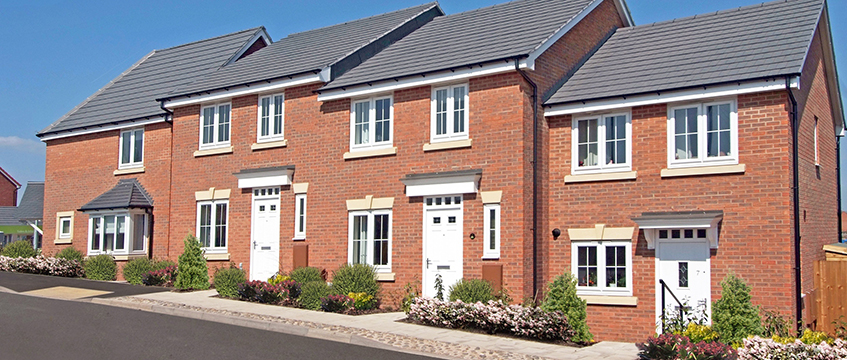Residential shared-ownership provider Heylo has bought a registered provider and announced an intention to raise £1bn in funding in a move it hopes will unlock a flood of institutional investment into the sector.
The company uses institutional capital to buy shared-ownership homes around the UK, which it converts into long-dated-income products. Unlike a housing association, which would buy the homes in advance of development, Heylo takes no development or sales risks. It essentially buys the rental part of a shared ownership flat and turns it into a long-term income stream.
Since its inception in 2014, it has allocated £300m from the Lancashire County Pension Fund and its tie up with the London Pension Funds Authority.
“Our business plan is relatively straightforward,” says chief executive Nicholas McAlpine-Lee. “We raise money from institutional investors, we deploy that acquiring shared-ownership properties… and the properties then produce very long-dated rental income streams that are inflation linked. It’s that inflation linkage that is incredibly important and attractive to institutional investors.”
RP status
In a first for the UK residential market, Heylo has bought the currently dormant housing association Three Conditions, giving it registered provider status, and allowing it to expand its operations.
While any company is allowed to provide affordable housing, the UK planning system through its section 106 agreements and the shared-ownership mortgage market are not set up to deal with non-registered providers.
“Because these aspects were holding back our business, one of the decisions we faced was do we continue to wait, and it slows down the pace of our investment, growth and the growth in this tenure, or do we find a way around it or through it?” says McAlpine-Lee.
As a result, the company commissioned Savills last summer to investigate how long it would take to become a registered provider. In the end, it was more financially sensible and faster to buy another RP.
Institutional opportunities
The move is aimed at expanding its own operations considerably. Heylo has a target of investing £1bn by 2020, which works out at between 7,000 and 8,000 homes.
McAlpine-Lee says the company is in talks with institutional investors to secure another £500m in funding, and he wants to grow the company up to raise £400m-£600m each year from investors.
The weight of capital from institutional and other investors looking for routes into the UK housing market is well reported. Savills estimates that £50bn is looking to buy into the UK PRS alone, however, the difficulty has always been finding access.
Heylo issues both 38- and 68-year bonds, which are publicly listed on the Irish Stock Exchange, structured as fully amortising and index-linked. A blend of the two has a coupon of 2% above inflation.
The new status will make it easier to buy stock, and for others to sell its units. The move could soon be followed by other companies and has attracted political support and interest. Former housing minster Nick Raynsford is to chair the new housing association.
McAlpine-Lee says what Heylo is doing is not really new, but ties together a variety of other threads.
“What we have done is brought together different aspects and technologies and put it together in what we hope was the most sensible way to match one thing with another and remove as many risks in the process.”
The move to buy an RP will also unlock further deals in the sector: there is technically nothing to stop a private fund or institution buying a for-profit registered provider and accessing the returns of its stock.
Issues
Despite the potential, there are downsides to the model.
The RP status means the company is now vulnerable to government regulation, which can be fatal towards attracting investment – as was the case when the previous government said all housing associations must reduce their rent by 1% each year, thus reducing their ability to raise money.
There is also a potential issue around losing stock through residents buying their properties.
However, McAlpine-Lee says that demand is so large – there is a waiting list of 200,000 people looking for shared-ownership homes and less than 8,000 are built each year – that neither issue will be a problem.
How it buys stock
- Heylo has so far built up 1,000 homes in 120 local authorities. Heylo acquires stock in four ways:
- Bulk purchasing existing portfolios from landlords who want to release capital investment and build more housing. It bought the Bellway Housing Trust portfolio from Bellway.
- Working in partnership with housebuilders in a similar way to how housing associations agree to take shared-ownership assets. However, Heylo takes no development risk.
- In partnership with authorities to help them redeploy Right to Buy receipts, which are limited, and thus the local authority buys a share of the property.
- Do-it-yourself shared-ownership: buyers find a property through conventional channels and approach Heylo, which will act as a cash buyer and turn it into shared-ownership.
How it works: on a hypothetical £200,000 property
- In a housing association deal, it would buy the property for £120,000 in advance. It would then sell the 50% stake for £100,000 and the remainder, which is income-producing, would cost it £20,000.
- In a Heylo deal, the housebuilder would build and sell the shared-ownership unit, getting the £100,000. Heylo would then pay £60,000 to the housebuilder for the “rental” half of the asset.
- The reason Heylo can take lower returns is that it takes no development or sales risk, and only buys the finished, income-producing and sold, product.
To send feedback, e-mail alex.peace@egi.co.uk or tweet @egalexpeace or @estatesgazette











